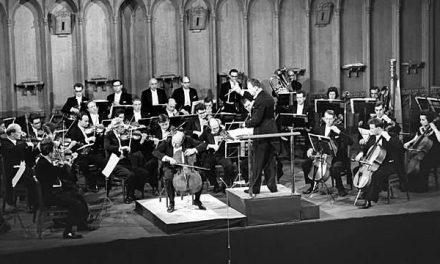In the 1970s Anglo-American feminist scholars in a variety of disciplines began to explore the problematic representations of women in Hollywood cinema, issues and concerns over female spectatorship, as well as the history of women’s cinema in Hollywood and beyond. Two seminal works Marjorie Rosen’s 1973 Popcorn Venus: Women, Movies and the American Dream, and Molly Haskell’s 1974 From Reverence to Rape: The Treatment of Women in the Movies, pointed to stereotypical portrayals of women mostly in Hollywood films. The conclusions were epitomised by Haskell when she said, “You’ve come a long way baby … and it’s all been downhill.” Meanwhile, at the same time in Britain several female scholars developed ideas grounded in psychoanalysis, semiotics and Marxist ideology, some offering a pessimistic account of female representations on screen, while others were more optimistic. Such accounts raised questions about female spectatorship and the male gaze, but they also questioned the female gaze and the male body.
At the end of the millennium, for cultural commentators like Susan Faludi (1999), it was curiously Western masculinity that had apparently reached an apocalyptic state. Its apparent traditional markers (a breadwinner status; social dominance; emotional self-efficacy and regulation) and that men should be adventurous, and risk seeking, even if this means the endorsement of (or participation in) violence – had been pathologised. In the wake of this cultural evolution, old jobs were lost; so-called masculine spaces once filled with miners, dockers and engineers were left barren or converted to penthouse homes and middle-management sites for the newly saturating white collar (so went the rhetoric), while the modern western male was increasingly under pressure to conform to commercial cultures of style, celebrity, and consumption. Ros Coward (1999) asked: when looking back on the achievements of feminism, “Is it now holding us back?” Is it demonising men and denying them the right to understanding and equality in a world that is perhaps far harsher for them than ever before?
These questions of course were not entirely new. In fact, media diatribes on underachieving boys, deserting fathers, Viagra, the boom in male plastic surgery and cosmetics, the apparent explosion of young male suicide, crime and youth delinquency, were dominant themes of the 90s. Hollywood soon joined the tirade and by the final year of the millennium seemingly had its biggest outpouring of ‘masculinity in crisis’ cinema. From Fight Club and The Matrix, to American Psycho, American Beauty, Austin Powers: The Spy Who Shagged Me and Kubrick’s Eyes Wide Shut (amongst many more), Hollywood seemed to turn its lens on the rhetoric of apparent despair. Away from this (though in ways that have yet to see any sustained kind of analysis), a number of films featuring overtly strong (“career”) women were also making waves on the big screen in 1999 and early 2000 (see Election, Drop Dead Gorgeous, The Bone Collector, Erin Brockovich, Gloria, Cruel Intentions, Dick, Stir of Echoes, Double Jeopardy, The Messenger: The Story of Joan of Arc, and Girl Interrupted for example), providing collective accounts of dangerous and threatening girls and women.
Now, exactly 25 years after this outpouring (and exactly 50 years on from Haskell’s seminal From Reverence to Rape), we are looking to explore this cinema and its legacy.
We invite contributions that deal with the above issues from a broad variety of perspectives. From researchers and scholars, from outreach initiatives to practice-based research among others, we welcome a diversity of approaches on how film is grappling with contemporary portraits of gender in contemporary cinema in and beyond Hollywood.
Topics may include, but are not limited to:
- The status of cinematic masculinity nowadays
- The status of cinematic femininity nowadays
- Challenging male or female dominance on screen
- The female spectator then and now
- The female gaze then and now
- The male gaze then and now
- The male spectator then and now
- An exploration of (this/ selected) cinema made 25 years ago at the end of the millennium
- Interpretations of the end of millennium social and cultural moment
- The more recent appropriation of some of these cinematic texts into the “manosphere” (by individuals such as Andrew Tate) and/or far- and alt-right communities
- Advances in cinematic technologies and time fracturing in this end of millennium cinema (or of later cinema influenced by/indebted to examples in this canon)
- Equality in contemporary cinema
- The evolution of Gender and sexual diversity over the last 25 years
- Toxic masculinity as a cinematic theme
- Gender and empowerment on screen
- Gender and social change on screen
- Women’s and/or men’s weaknesses on screen
- Women’s and/or men’s strengths on screen
Please submit abstracts for individual papers (max 250 words) with presentation title, up to 5 key words, your full name, affiliation, 50 word biography, and email address to menandwomenonscreen@gmail.com
We support the presentation of practice-as-research, with papers and screenings. We also welcome abstracts from early career and postgraduate researchers.
All or a selection of papers will be considered for publication.
New Submission deadline for abstracts: Friday 6th October 2024
Registration fee: £75
Conference venue: Media City, University of Salford, UK




